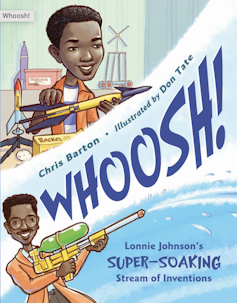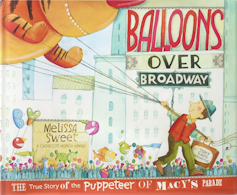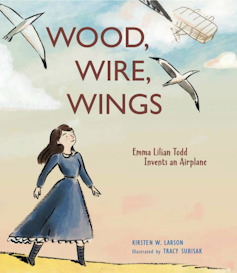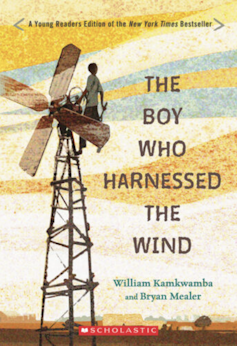5 children's books that teach valuable engineering lessons
- Written by Michelle Forsythe, Assistant Professor of STEM Education, Texas State University
Most people think of the children’s classic “Charlotte’s Web[1]” as a story of devoted friendship between a spider and a pig. But it can also be read as a story of a budding engineer – Charlotte – who prototypes, builds, tests and revises her web to solve a problem.
As teacher[2] educators[3], we use children’s books to make lessons about science[4] and engineering[5] accessible to children of all ages.
Through books, children can experience how engineers use design-based thinking[6], which focuses on creative and innovative solutions, to solve problems. They can also explore the history of things that they use every day, such as crayons, bridges and cars. And they can expand their image of who can be an engineer or inventor.
Our work[7] suggests that picture books and biographies for young adult readers can be particularly effective for introducing children to the engineering design process[8]. These are the actions – ask, imagine, plan, create, test and improve – that engineers take to design a solution to a problem. They also help children understand engineering habits of mind[9]. These are the traits, such as creativity and persistence, that help engineers successfully solve problems.
Here are five of our favorite science, technology, engineering and math (STEM) books for children, and some of the engineering lessons that they teach.
 The man who made water guns awesome.
The man who made water guns awesome.
Lonnie Johnson[10] was always curious about how things worked. One day, while trying to figure out a way to replace the harmful chemicals found in refrigerators and air conditioners, he connected a pump with a nozzle to his bathroom faucet. When he turned the faucet on, water blasted across the room. Johnson had invented a water gun! Johnson tested and redesigned his new invention until it became the perfect summer toy – the Super Soaker.
This picture-book biography introduces young readers to the prototype-test-redesign process that is central to engineering.
 Marionette strings inspired the famous parade balloons.
Marionette strings inspired the famous parade balloons.
Grab a front-row seat to the story of how Tony Sarg, an immigrant from Western Europe, created one of America’s most iconic holiday traditions – the giant balloons of Macy’s Thanksgiving Day Parade[11].
This picture-book biography highlights how engineers draw on imagination and inspiration to improve their designs. After reading, children can use these same traits to create their own Indonesian rod puppets[12]. These puppets inspired Sarg to flip his marionette strings upside-down so that his famous balloons could soar.
 Greatness often starts with failure.
Greatness often starts with failure.
Lilian Todd[13] – a self-taught inventor, engineer and contemporary of the Wright brothers – worked to improve airplane designs in the early 1900s. This picture-book biography of her life illustrates how an engineer’s designs frequently fail. And it uses quotes from Todd’s perspective – “There is no work so discouraging, so exasperating, so delightful … so exhilarating as building aeroplanes” – to capture her resilience in overcoming these challenges.
As children often face similar obstacles in their own STEM journeys, Todd’s story provides a model for how children can prepare for, reflect on and move forward from moments of failure.
 Life wasn’t always so sweet for the young chocolatier.
Life wasn’t always so sweet for the young chocolatier.
We’ve all eaten Hershey’s chocolate bars and Hershey’s Kisses. However, the road to commercial success for Milton Hershey[14] was circuitous, and he failed many times before he succeeded.
This biography, written for ages 8-12, highlights the power of persistence and the design axiom: “Fail often so you can succeed sooner[15].”
 Kamkwamba used old bike parts to power his family’s home.
Kamkwamba used old bike parts to power his family’s home.
This biography, written for ages 10-13, tells how teenaged William Kamkwamba[16] built a wind turbine to produce electricity for his family in Malawi. The story shows how anyone, of any age, anywhere in the world can be an engineer.
This book is a great selection for a family or multi-age book club as it is also available as a picture book[17], a biography for adults[18] and even a movie[19]. Everyone can pick the version that is best for them and gather in person or via video chat to talk about lessons learned from Kamkwamba’s dream, determination and design.
Other books
Many books that are already in homes, schools and local libraries can also be used to introduce the engineering design process and habits of mind. We recommend looking for the following story features[20] when choosing a book to explore design-based thinking with children.
First, the story presents a problem in a real-life context. Second, the story describes a design plan or way to solve the problem. Third, a character creates, tests and evaluates a prototype of this design. And finally, a character improves the design and applies the revised solution.
Parents and teachers can find more high-quality STEM books on the National Science Teaching Association’s Best STEM Books K-12[21] or our own expanded list of favorites[22].
[Get our best science, health and technology stories. Sign up for The Conversation’s science newsletter[23].]
References
- ^ Charlotte’s Web (www.harpercollins.com)
- ^ teacher (scholar.google.com)
- ^ educators (scholar.google.com)
- ^ to make lessons about science (my.nsta.org)
- ^ engineering (www.nsta.org)
- ^ design-based thinking (www.ideou.com)
- ^ Our work (doi.org)
- ^ engineering design process (www.nasa.gov)
- ^ habits of mind (www.linkengineering.org)
- ^ Lonnie Johnson (lonniejohnson.com)
- ^ Macy’s Thanksgiving Day Parade (www.macys.com)
- ^ Indonesian rod puppets (www.asiaeducation.edu.au)
- ^ Lilian Todd (www.earlyaviators.com)
- ^ Milton Hershey (www.thehersheycompany.com)
- ^ Fail often so you can succeed sooner (static1.squarespace.com)
- ^ William Kamkwamba (www.williamkamkwamba.com)
- ^ picture book (www.penguinrandomhouse.com)
- ^ biography for adults (www.harpercollins.com)
- ^ movie (www.netflix.com)
- ^ following story features (www.nsta.org)
- ^ Best STEM Books K-12 (www.nsta.org)
- ^ list of favorites (drive.google.com)
- ^ Sign up for The Conversation’s science newsletter (theconversation.com)
Authors: Michelle Forsythe, Assistant Professor of STEM Education, Texas State University
Read more https://theconversation.com/5-childrens-books-that-teach-valuable-engineering-lessons-162583

